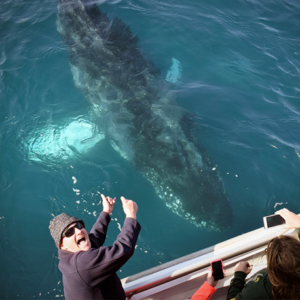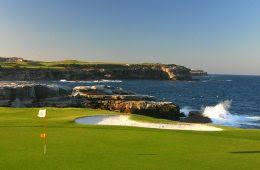Close
Blog About - 1300 547 214

Port Fairy in southwest Victoria is a quiet seaside town, its harbour denotes the end of what is known as Victoria's shipwreck coast. It's a popular destination for romantic long weekends or the midway point of a 7-day tour. From Melbourne, the longest way to get there is to travel the Great Ocean Road, 371kms and 5 hours 20mins. Via Ballarat, it's just over 300km 3hrs 45m, or the most direct route via the A1 is 280km and 3hrs 30mins. This beautiful and charming place still looks much as it did over 100 years ago, more than 50 of the buildings in the town are classified by the Australian National Trust.
Here are some of the best things to do when you get there.

The Beach is also glorious, you can swim, take a surfing lesson or just relax on the sand.
Photo credit: visit victoria

At the end of the scenic 'Port' walk is the historic lighthouse on what was Rabbit Island and later became Griffiths Island. There is also a muttonbird breeding colony on the island. For fabulous views and a historic perspective of the shipwreck coast, the lighthouse is a 'must visit'.
Photo credit: I am Port Fairy
May to September the all of the Great Ocean Road is a great place to whale watch. Take a Mulloka Cruise from the harbour (Rug up!). There are also fishing charter operators in the harbour year-round if you want to go deep-sea fishing.

If you are a golfer the Port Fairy Golf Course will be a must for you. It's a true Links course and at $49 a round it has been consistently ranked the number one course under $50 in Australia. The breathtaking views over Port Fairy Bay may make it hard to concentrate on the course, but a great day is guaranteed.

The festival also boasts some top-notch craft and market stalls. The Port Fairy Folk Festival has a reputation for its vibrant craft scene. Its stalls sell unique, handmade items. There are sites available across the town. There are also workshops for children, where they can learn to make some of these amazing gifts.

Photo credit: Parks Vic.
Remember to pay your respects to the traditional custodians of the area, the Gunditjmara people, elders past, present and emerging.
Shelley has been working in the travel industry for over 30 years, in aviation, for tour operators and since 2016 for DriveNow. Having travelled extensively worldwide, alone, as a couple and with her family, Shelley has experience to share about how to make the most of your holiday, especially road-trips to amazing destinations.